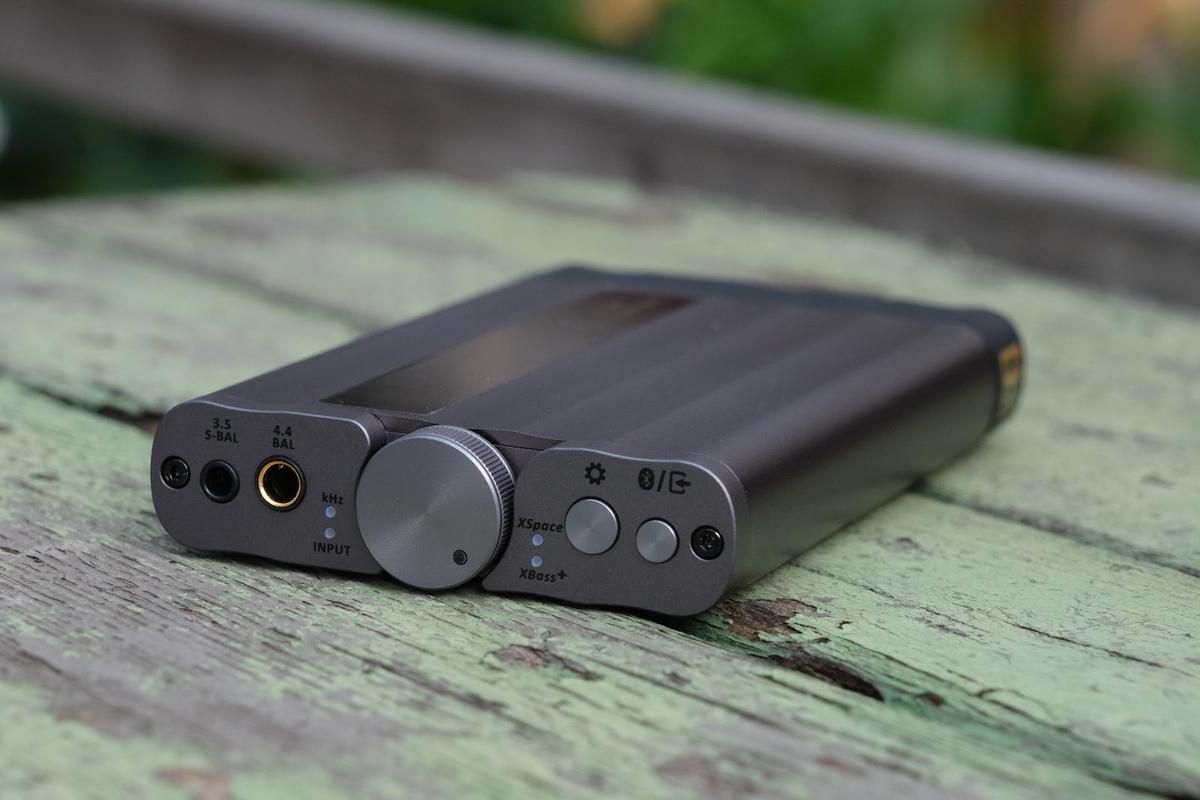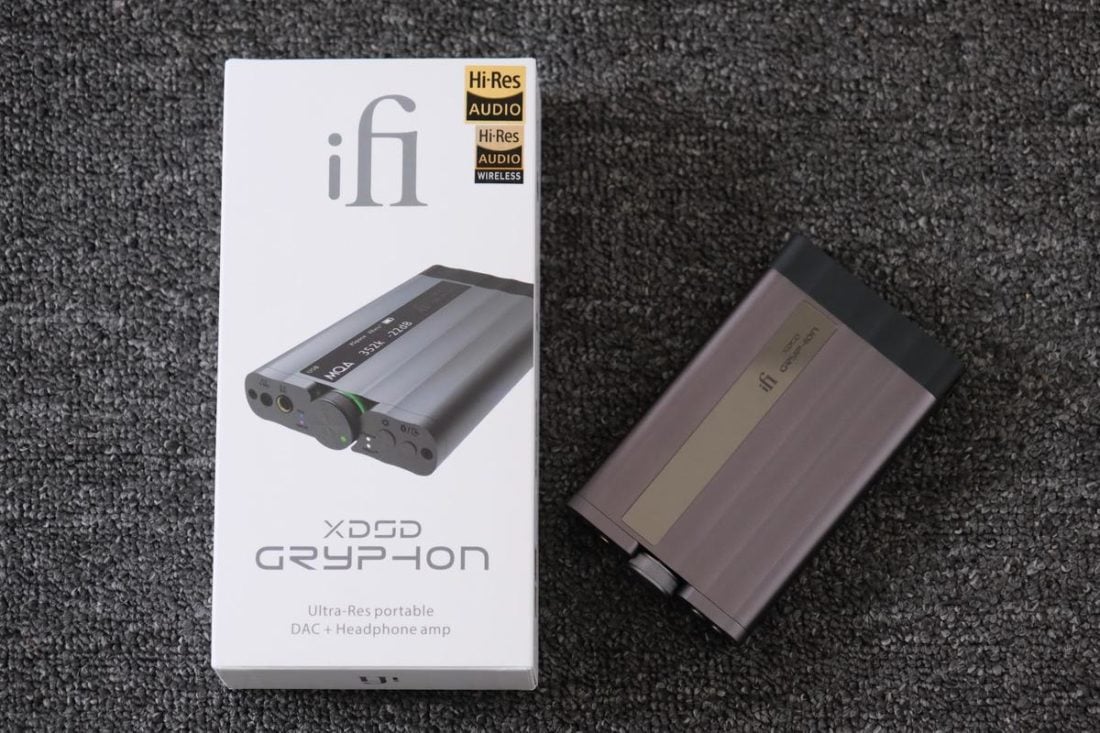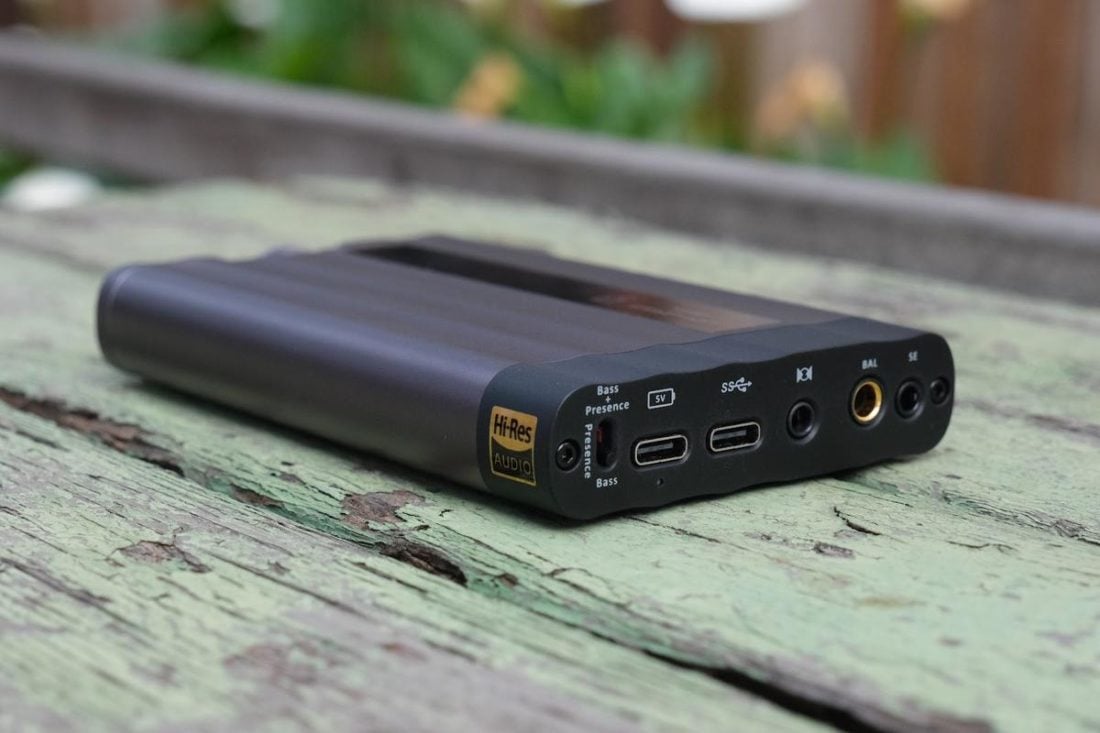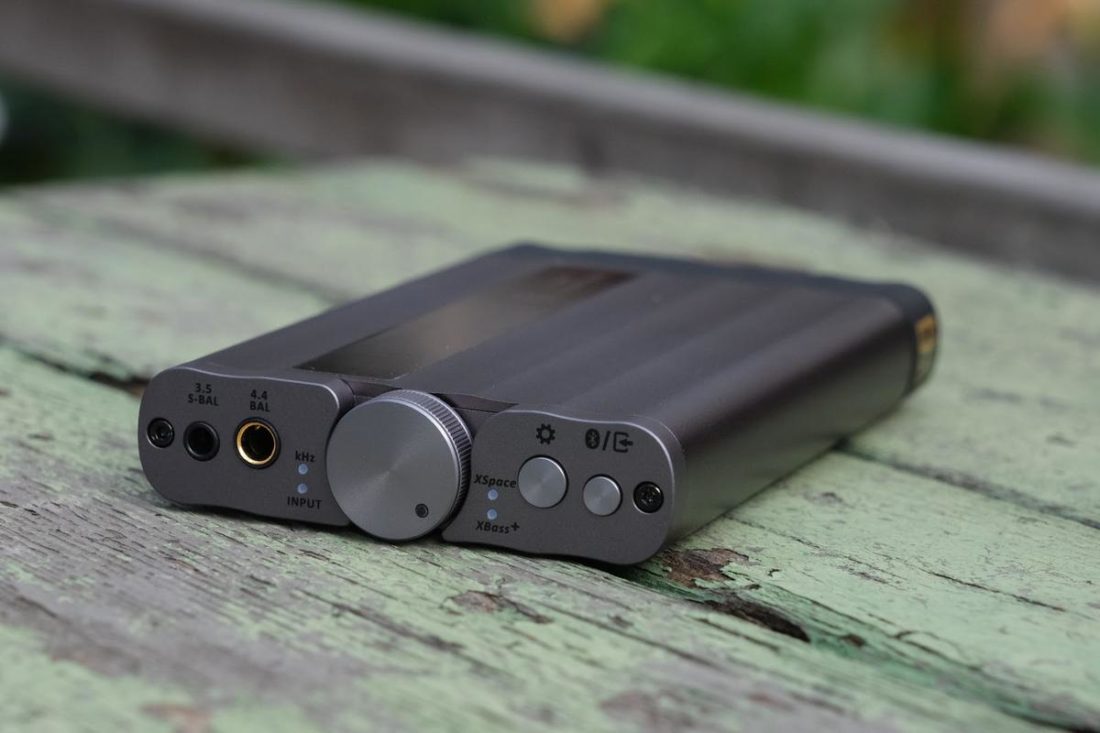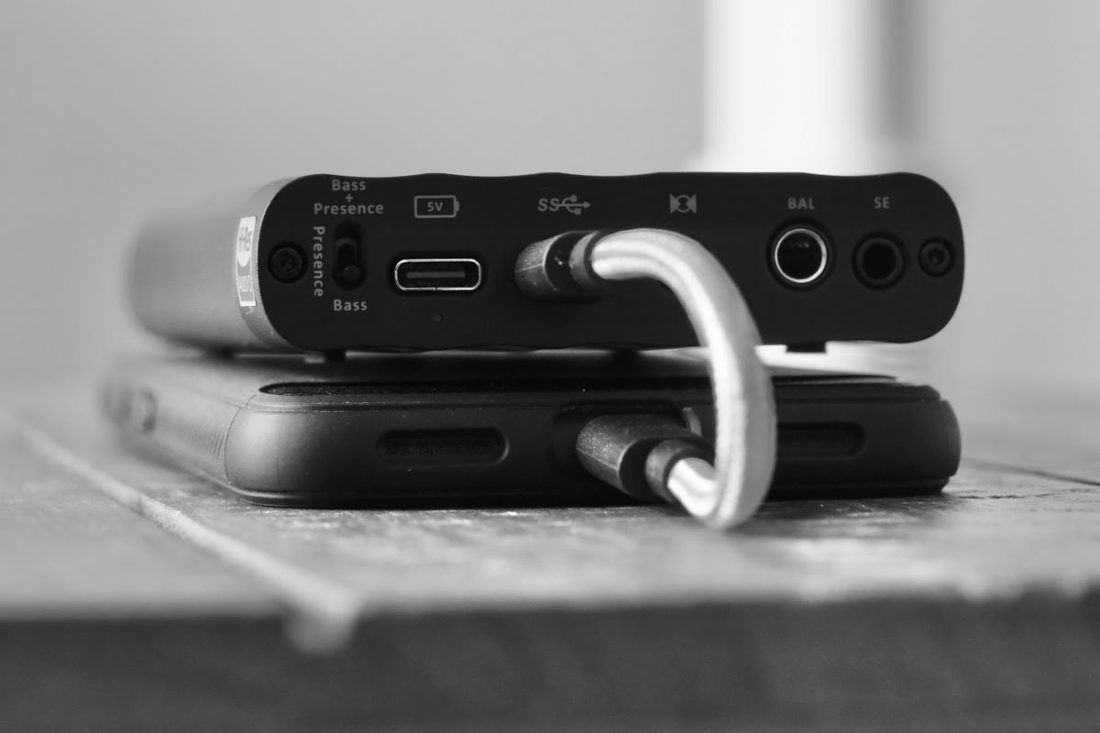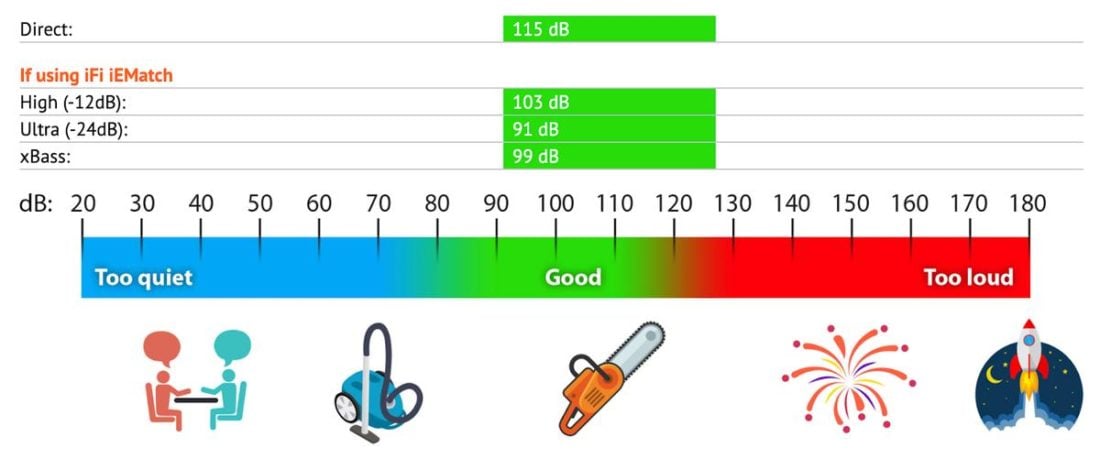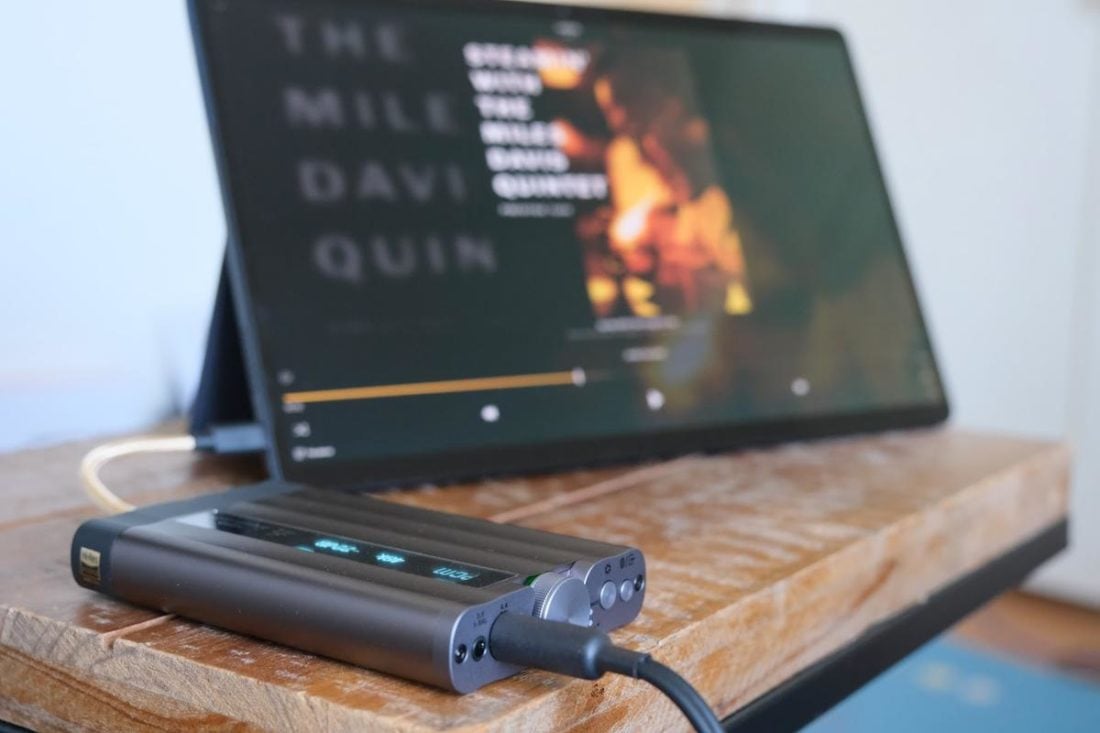It stands to reason that shrinking down a combined DAC and amplifier should lead to unwanted compromises. Perhaps it’s the number of buttons or interfaces, the display, the quality of internal componentry, or the thermal dynamics. After all, as the size comes down, so too does the physical space for all of these things. Right? Actually, it can be done very well, and there have been many great examples here on Headphonesty to prove it. There are still compromises with downsizing, which we’ll touch on in this review, but for those of us who put sound quality first, who regularly reach a state of bliss with their music, and want it all on the go, they’re worth it. Having recently reviewed their diminutive, and value-packed hip-dac2, I was excited to see what else iFi has in their lineup, and the feature packed xDSD Gryphon looked like the next substantive step up the ladder for portable use. Little did I realize what a step up it would be.
Technical Specifications
Form: Portable DAC/Amp
Headphone Output Power (Single-Ended): [email protected]Ω; [email protected]Ω Headphone Output Power (Balanced): [email protected]Ω; [email protected]Ω Distortion: <0.005% Digital Inputs: USB Type C, S/PDIF coaxial, Bluetooth 5.1 Analog Inputs: 4.4mm balanced, 3.5mm single-ended Digital Formats: up to PCM 768kHz, DSD512, DXD 768kHz, MQA 384kHz Headphone Outputs: 4.4mm balanced, 3.5mm single-ended Battery: 3,600mAH (8 hours battery life) Dimensions: 12.3 x 7.5 x 1.9cm Weight: 215g
Packaging
Much like the hip-dac2, the xDSD Gryphon comes in a compact and attractive retail box. The buyer casually browsing their local hi-fi store looking for a product like this will be in no doubt of the unit’s capabilities. All the specs are written on the box, and I get the sense that iFi has learned a thing or two from smartphone manufacturers: The box is attractive and most of it can be recycled when you’re finished with it.
In the box
The xDSD Gryphon USB Type C to USB Type A cable USB Type C to Lightning adapter cable USB C charging cable Carry pouch Quick start reference card Warranty card
Design
iFi certainly knows how to make a great looking portable audio product. Like the hip-dac2, the xDSD Gryphon is a classy-looking and pocketable DAC/amp, with a black and gunmetal gray body and two distinguishing design features. First is an OLED display across the top, that shows useful information like the digital file type, bitrate, volume, settings, and battery status. It’s a nice touch, and iFi claims it adds no noise to the audio path, although the display can be set to off if desired. Second is a touch of design flare in the form of a ribbed finish on the body. I have to say, I’m a fan. There’s no practical reason for it that I can decipher, but that’s just the point. This is the kind of touch that makes a product feel special, setting it apart from a myriad plain boxes. For a device that’s designed to be picked up and toted around, this matters more than we may realize. The xDSD Gryphon is packed with interfaces and buttons. The rear panel features USB, S/PDIF, balanced and single-ended inputs, as well as a charging port (USB-C). Finally, there’s a 3-way selector switch that enables the owner to tweak the effect of the bass boost function, named ‘XBass II’. Switching to the front, there are balanced and single-ended jacks, a combined power on/off switch and volume control, and selector switches for the display and input. iFi has also been smart about the way they’ve used color on the LEDs on the front. For example, when turning the digital volume control, a tiny LED changes color to indicate the gain, with amber and red indicating high volume. The same color coding approach applies to the audio file format, and the selected input. It’s a lot to remember, but I’ve no doubt it will get easier to recall with time, and of course there’s always the OLED display on the top of the unit. The details are also set out in the handy quick reference card. As I experienced with the hip-dac2, and not limited to iFi products by any means, there’s a fundamental ergonomics challenge with these companion DAC/amps. There’s no getting around the fact that carrying one of these together with your phone makes for a clunky experience. The super short accessory cables don’t help, as they force you to awkwardly stack the xDSD Gryphon and your smartphone on top of one another. There are small, rubberized feet on the underside, which at least reduce the risk of scratching your phone. Ultimately, this is the price you have to pay to get a true high-end audio experience when on the go.
Controls
Similar to the hip-dac2, iFi places its volume control centrally on the front of the unit. It’s a combined on/off switch and digital volume control, neither of which I’m a fan of. The push button requires a solid push to turn the unit on and off, so you have to hold the unit firmly. This makes it challenging to operate one-handed, and doesn’t help with those ergonomic challenges I referred to earlier. The same volume control can also be used to mute the audio feed, and also as a selector dial when using the rudimentary menu system viewable on the top panel display when selected. I generally dislike digital volume controls, mainly because there’s no limit to their rotational movement, so the dial turns endlessly. The visual cues like the color LEDs and OLED display help, but there’s also a challenge with the ‘gearing’ of the volume control. iFi has chosen very fine volume tuning, so anything more than a volume tweak requires multiple turns on the dial. These are details you’ll probably forget about once you’re used to the quirks of this DAC/amp, but nevertheless I feel they could use some attention from the UX designers at iFi. Alongside the volume control are selector buttons for the OLED panel display, and input selection. Finally, on the underside there’s a selector switch labeled ‘iEMatch’. This is a proprietary iFi technology that helps to reduce hiss on more sensitive IEMs and headphones, without impacting their dynamic range.
Internals
iFi clearly takes great pride in the quality of components they source for their equipment, and the xDSD Gryphon is no exception. The onboard Burr Brown DAC chip supports a wide range of digital audio formats, up to and including 768kHz PCM and octa speed DSD512. The XMOS controller supports full MQA decoding, and the Qualcomm Bluetooth 5.1 chip covers the high end wireless audio codecs, both for input and output. I’m impressed with the level of detail iFi readily shares for this product. They include a ‘Tech Lowdown’ PDF on their website that goes into exhaustive detail about the capabilities of the unit, as well as the componentry that supports it all. Worth a look if you’re heavily into comparing tech specs. Of course, what really matters is the effect all this great technology has on the final sound. The xDSD Gryphon certainly creates a strong impression before you even plug it in. Time to take it for a test drive.
iFi xDSD Gryphon Sound
As a portable, or desktop companion device, I chose to test it together with an Android phone, and a Macbook Pro, mostly sticking with the default settings, aside from some experimentation. The source devices were connected both via USB and also wirelessly using Bluetooth, for a point of comparison. Music was streamed from the internet using Qobuz. One of the impressive capabilities of the xDSD Gryphon is the range of power it’s able to use to drive IEMs and headphones of all kinds. The highly sensitive models can be tamed with the iEMatch function, and the more power hungry can be fed all they need. There’s a handy tool on the iFi website where you can select your own headphones and see what kind of performance you can expect. Here’s the result for my trusty 300 Ohm Sennheiser HD650s, which indicates they are comfortably accommodated by the xDSD Gryphon. So since these are my favorite headphones, this is what I used for my listening test. At my preferred listening level I barely needed to take the volume into the amber zone with the HD650s. Much of the time I didn’t even need to go out of green, suggesting the iFi DAC/amp was having no problem at all powering these headphones. And it wasn’t just volume that was working well either. From the moment I hit the play button on the first track it was clear I was listening to truly high end audio equipment. Overall I’d describe the sound signature as exceptionally revealing and smooth. Let’s break it down.
Bass
The first song was Migration by Bonobo, a track with a punchy and deep rhythm section. So many times I’ve listened to this track and heard the bass completely blown out and overpowering, with no control. Listening on the xDSD Gryphon, I was given the impression of a product confident in its abilities. No need to show off. No need to drive excess (unless you want it). Just accurate, controlled power. Where the track demanded it, the bass was there in spades. Everybody Knows by John Legend starts with a gutsy sub-bass whoop that repeats from time to time throughout the track. Once again, delivering deep notes with both power and control, without bloat, is a feat reserved for only the best audio gear. When you hear it for yourself, you’ll know what I mean.
Midrange
With the mids, again the xDSD Gryphon showed its pedigree. I’m especially sensitive to ‘shouty’, peaky mids, and I’ve been subjected to them with a lot of equipment. Not a hint of it here. Instead I was treated to new details in my favorite tracks, and a ton of space between instruments, making whichever instrument I chose to concentrate on easy to follow along with. Stereo imaging was also strong here, adding to the pleasure of hearing instruments and sounds popping up all over the soundstage. Tripping with Nils Frahm is a wonderful live recording of some often quite sparse sounding compositions, comprising both electronic and acoustic keyboards. It’s a treat to hear the keyboard keys with such clarity, as well as all the tiny noises in the auditorium, which gave me a real sense of being right there with the audience. The mids stayed evenly presented across all the songs I played, without ever becoming excessive. Indeed, I could imagine some listeners feeling the tuning a little lifeless, but I would certainly not be among them.
Treble
It was interesting to discover that, similar to the hip-dac2, the high end is relatively muted on the xDSD Gryphon. I guess that’s the iFi signature, and it works for me, although if you’re used to a lot of sparkly top end you may find this DAC/amp a little on the soft side, and I’d recommend an audition to be sure. As with the mids, for me this tuning is a plus, enabling me to listen for many hours without fatigue setting in. I loved the creamy smoothness of the top end on the xDSD Gryphon.
Where to Buy
Conclusion
The best equipment you’ll ever listen to gets out of the way and simply delivers musical entertainment that can make you smile, or make you cry. It takes you on a journey, and this DAC/amp will take you with it for many hours at a time. Well, until the battery finally gives out. Perhaps I was in a particularly good mood when listening to the xDSD Gryphon, or perhaps it put me there. It’s hard to say. All I know is that I was wanting to share the experience of listening to many of my favorite tracks with every Headphonesty reader. Trust me, the playlist would be long. This is, without doubt, the finest audio reproduction I’ve heard on a portable DAC/amp, and if you like to listen to your music on the move, or when away from your home setup, I’d strongly encourage you to seek this DAC/amp out for an audition.
